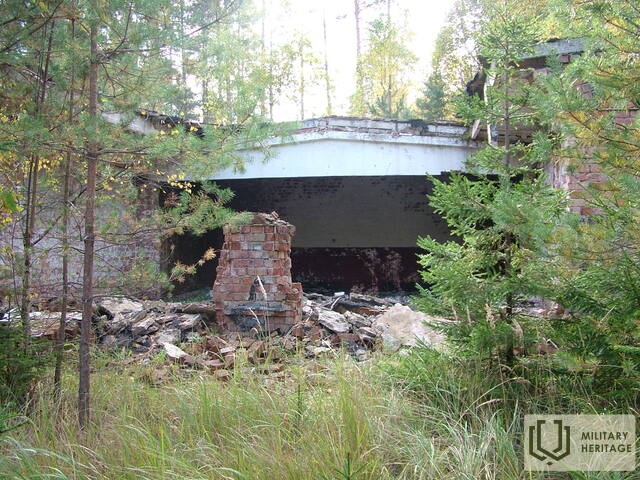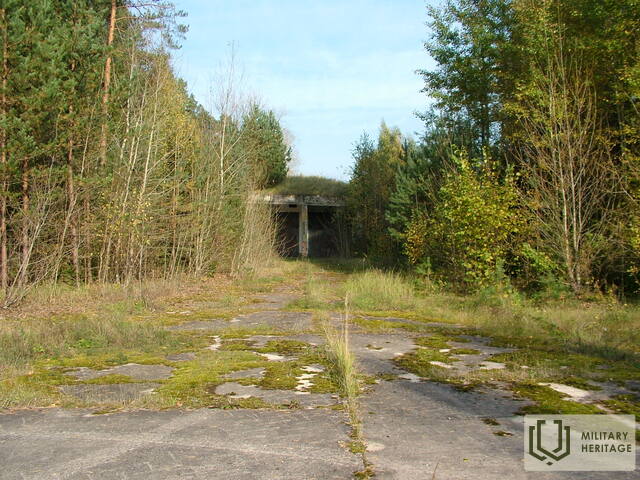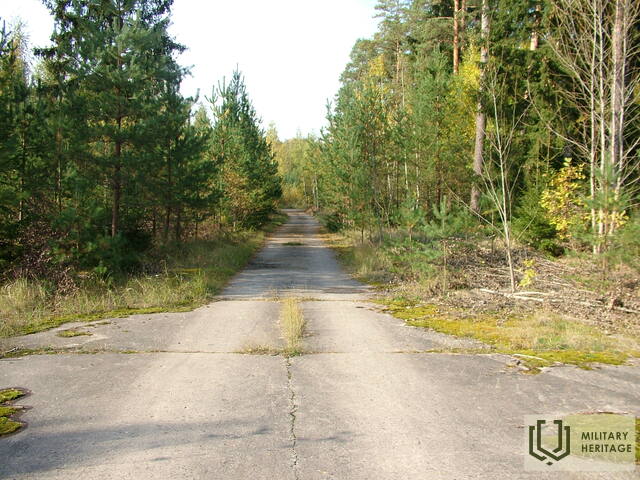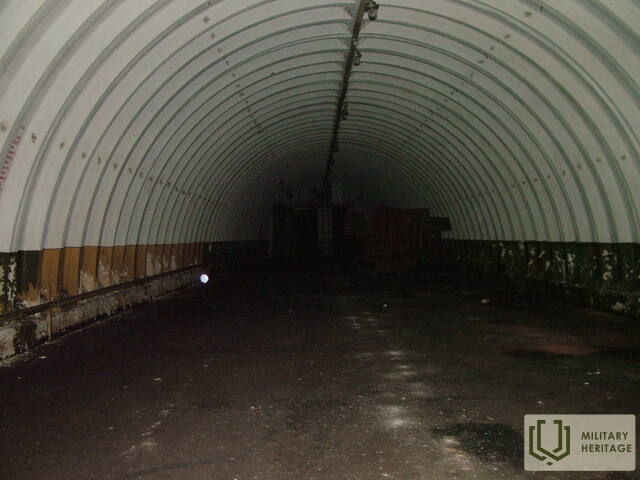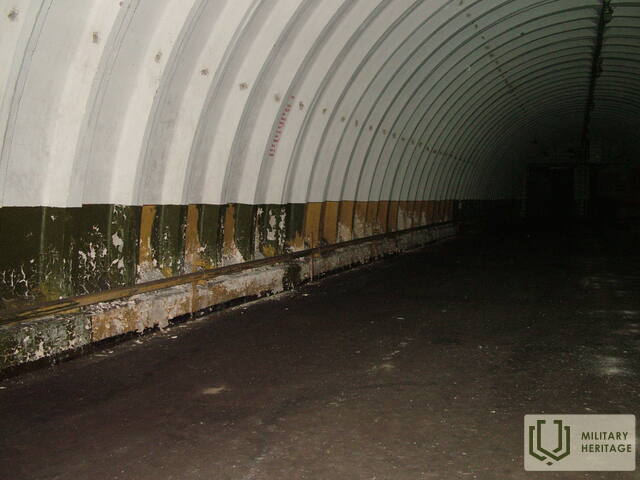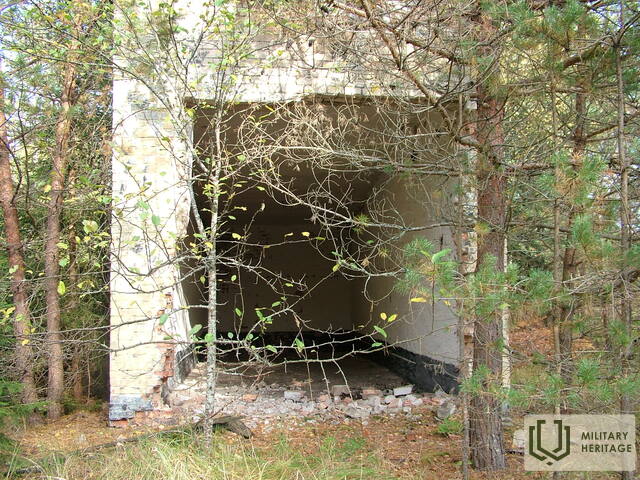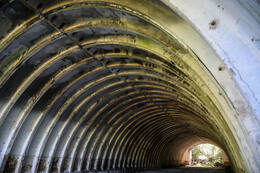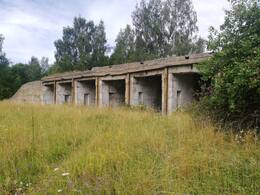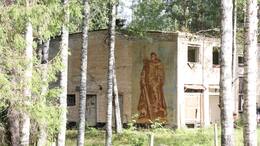Tervetės raketų bazė
Tervetės raketinė bazė buvo viena iš slaptų SSRS strateginių karinių bazių, kurioje buvo dislokuotos R12 balistinės raketos.
Tėrvetės raketų bazė yra Dobelės savivaldybės, Tėrvetės parapijos, miškų masyve, į pietryčius nuo Tėrvetės gamtos parko automobilių stovėjimo aikštelės. Raketų bazė su visa infrastruktūra užėmė 330 hektarų plotą, o cheminė dalis – 6 hektarų plotą. Karinio objekto pastato dalis 1994 m. buvo perduota Tėrvetės savivaldybei, kuri ją suskirstė į objektus tolesniam valdymui. Objekte atlikti radioaktyvumo matavimai (gama fonas), o jų rodikliai atitinka galiojančias normas. Važiuojant keliu, pro Tėrvetės kapines, pro Labrenči pastatą (buvusį penkių aukštų gyvenamąjį namą sovietinės armijos karininkams), kur kelias veda į buvusią raketų bazę, pirmiausia pamatome buvusį kontrolės punktą ir plytų sieną, ant kurios prieš 10–15 metų buvo sovietinio kareivio veidas ir žvaigždė. Važiuodami toliau į bazės teritoriją, pasiekiame gyvenamąjį namą ir karinės bazės automobilių garažus, kurie šiandien priklauso įvairiems savininkams. Teritorija ir kelias yra užblokuoti, nes tai privati nuosavybė. Į raketų bazę taip pat galima patekti iš Tėrvetės gamtos parko automobilių stovėjimo aikštelės per mišką. Už garažų palei kelią yra angarai, kuriuose buvo laikomos R-12 balistinės raketos su raketų paleidimo įrenginiais. Iš viso raketų bazėje yra keturi dideli angarai ir du mažesni angarai, kurie, manoma, yra vadavietės. Į šiaurės vakarus nuo raketų angarų yra keturios raketų paleidimo platformos. Raketų bazė priskiriama „Dvina“ tipo konfigūracijos raketų bazėms su keturiomis raketų šachtomis.
„Baltų rotos“ savininkas, juvelyras Vitautas Straupė, bazėje tarnavęs nuo 1985 iki 1987 m., prisimena: „Ta minėta plytų siena yra mano darbas iš Dembelio. Man buvo duota užduotis, bet nebuvo duotos jokios medžiagos. Jie pažadėjo mane išleisti namo iš sovietinės armijos tik tada, kai objektas bus paruoštas. Cementą ir akytąjį betoną, iš kurio iškalta žvaigždė ir lede sušalęs kareivis, gavome iš Rygos cemento gamyklos, kurioje tuo metu dirbo mano vaikystės draugas. Tiksliau, nuvažiavome ten armijos automobiliu ir jį gavome. Bet norėdami gauti plytų tai sienai, naktį nugriovėme vieną automobilių stovėjimo aikštelės plytų tvoros sluoksnį. Tai nebuvo sunku, nes kažkas, matyt, jį statydamas, perspyrė per cementą, o plytas beveik galėjai pakelti plikomis rankomis.“
Susijusi laiko juosta
Susijusios temos
Susijusios vietos
Bartos raketų bazė
Paplako pulkas. Barta – pietūs, Barta – šiaurė. Bazę sunaikino žmogus ir gamta. Pastatus užėmė miškas, raketų transportavimo sunkvežimiai ir patys raketų angarai nugriauti. Ryšių centras taip pat sunaikintas, o dauguma metalinių paleidimo platformų išardytos.
Remiantis oficialia informacija, Bartos savivaldybėje buvo dislokuoti šie sovietų armijos daliniai:
49028–279. BKF karinio jūrų laivyno perdavimo centras
25026, 49393 - 30-ojo BKF laivo raketų ir branduolinių galvučių sandėliai
49281 – Ryšių departamentas
20480 – 523-iasis Ryšių centro padalinys
1994 m., išvykstant iš Latvijos (Paskutiniai iš Latvijos išvykę kariškiai, Bartos raketų bazės įranga, iš Liepojos uosto išvyko 1994 m. rugpjūčio 31 d.), pateikė Rusijos Federacijos Šiaurės vakarų kariuomenės grupė. Bartos raketų bazės teritorijos apžiūros metu taip pat radome balistinės raketos R-5M (8K51M) (NATO klasifikacija - SS-3 Shyster) paleidimo vietas su greta esančiais vadovavimo bunkeriais. R-5M (8K51M) raketos su branduolinėmis galvutėmis buvo pirmosios, kurias okupacinės pajėgos dislokavo Latvijoje 1954 m. Liepojos rajono Bartos miške. SSRS gynybos ministerijos 1985 m. liepos 2 d. (!) sprendimu Nr. 700-330 karių daliniui Nr. 42341 (50-oji raketinė armija Smolenske, k/d 55135) Bartos miške buvo skirta 2623 hektarai žemės. Ten dislokuotos dvi 117-ojo raketinio pulko divizijos. Kiekviena divizija turi po 4 raketas. 1959 m. rugsėjo 18 d. armija paprašė dar 385,25 ha penkioms vietoms netoli Bartos Brienampurvos. Žvyras bazės statybai, angarų užpildymui ir maskavimui buvo atvežtas iš netoliese esančio Krutės karjero. Ūkininkai iškeldinami iš Kalnāju, Placėnių, Purvičių, Zemturu, Purvu, Knīpupju, Mazturu, Birzmalių namų Bartos savivaldybėje. Archyviniuose dokumentuose nurodyti 8 ūkių likvidavimo nuostoliai siekia tik 154 711 rublių. Visos bazių konstrukcijos į Bartą buvo vežamos tik naktį, kad niekas jų nematytų. Tačiau Bartos gyventojai visada žinojo: kai armija pradės lyginti kelius, jie kažką veš. 1968 m. Bartos paviršinio paleidimo raketų divizijos buvo išformuotos. Modernizuotos šachtinės raketos (R-12 ir R-14) Bartoje nėra dislokuotos, nes ši vieta yra pelkėtoje vietovėje.
Pasienio raketų bazė
Ši buvusi raketų bazė yra valstybinėje miško žemėje Piiri miestelyje, Muhu saloje.
Jis buvo baigtas 1963 m. Kaimyniniame Liivos kaime septintojo dešimtmečio pabaigoje buvo įkurta S-125 sistemos raketų bazė.
Oro gynybos raketų divizija buvo skirta ginti vakarinę Sovietų Sąjungos sieną. Diviziją sudarė apie 16 karininkų ir 60 šauktinių. Bazėje buvo elektros generatorius, bunkeris, vadovavimo centras ir angarai S-75 raketoms. Taip pat buvo atskiras angaras, tikriausiai skirtas trijų branduolinių galvučių raketai (tikriausiai OTR-21 „Točka“).
Iš bazės iki šių dienų liko raketų angarai, garažai, bunkeriai, vadovavimo centro griuvėsiai ir bunkerys su šaudymo angomis.
Sovietų armijos raketų bazė Zeltiniuose
Buvusi sovietų armijos raketų bazė yra Medņukalnuose, Zeltinių valsčiuje, Alūksnės savivaldybėje. Ši branduolinių raketų bazė buvo ypač slaptas sovietų armijos karinis objektas, veikė Zeltiniuose, Alūksnės savivaldybėje, nuo 1961 iki 1989 m. Objekte buvo dislokuotos vidutinio nuotolio balistinės raketos P-12 (8K63) ir P12Y (8K63Y) su 4 paleidimo aikštelėmis. Jų skrydžio atstumas buvo 2200 kilometrų. Šiuo laikotarpiu armija spygliuota viela saugojo apie 300 ha plotą, esantį mažiau nei kilometro atstumu nuo nacionalinio regioninio greitkelio Sinole-Silakrogs P34. Gyvosios ir itin slaptos zonos išliko iki šių dienų. Betoniniai keliai veda į tuo metu nuo akių paslėptas vietas: angarus, paleidimo aikšteles ir slėptuves nuo bombų. Dešimčių hektarų plote išsidėstę įvairūs branduolinių raketų priežiūros ir aptarnavimo statiniai. Įrenginiai, tiekę autonominį elektros energijos, vandens ir šilumos tiekimą teritorijai, buvo sunaikinti pasitraukus kariuomenei. Kariuomenei pasitraukus, dalis įrangos buvo perduota vietos savivaldybei. Šiuo metu lankytojai gali apžiūrėti 20 ha buvusios raketinės bazės teritorijos, kurios pietvakarinė dalis yra turistų traukos objektas. Bazę aplankę turistai gali rinktis iš pagrindinės ekspozicijos apie raketinės bazės istoriją, esančios Zeltinių muziejuje, arba turistinio maršruto bazės teritorijoje. Draugų grupės iki 12 žmonių čia gali žaisti lazerinį žaidimą.




